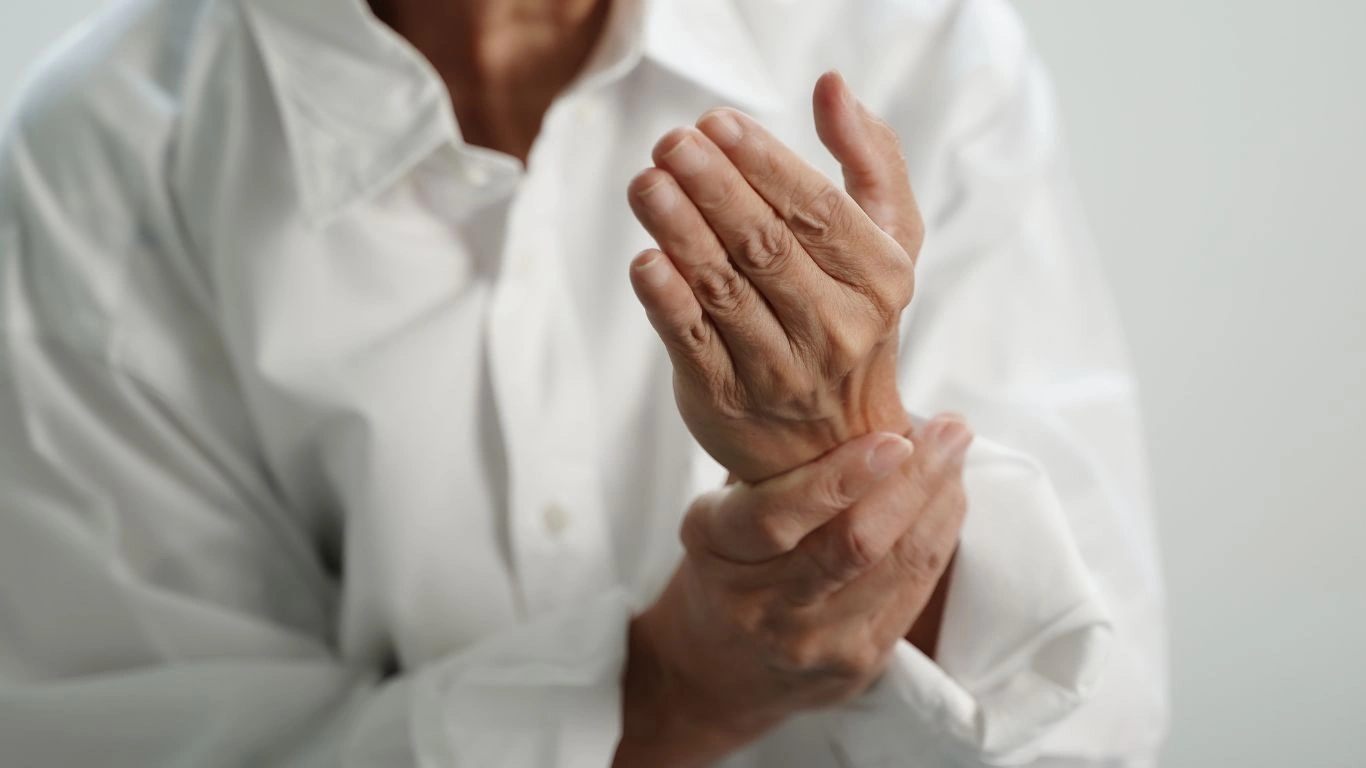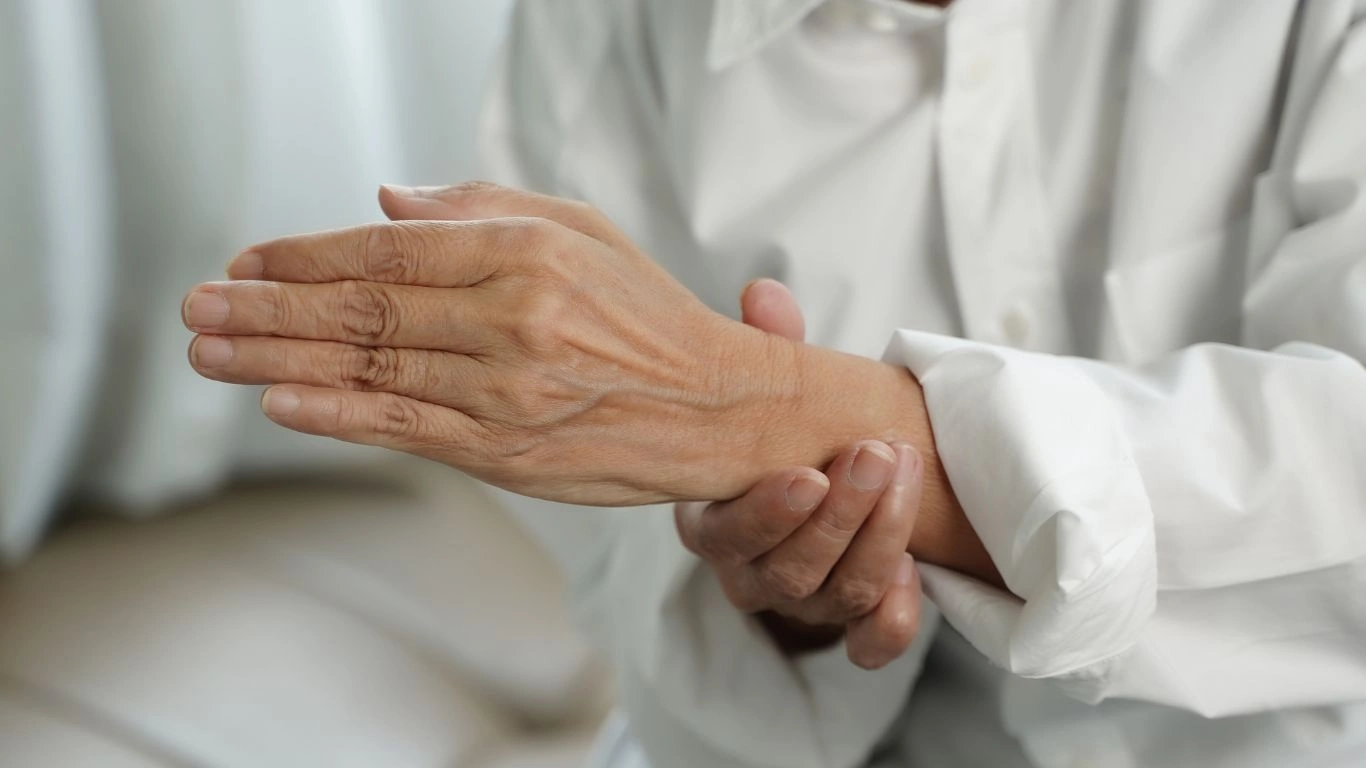How Rheumatoid Arthritis Impacts Daily Mobility: Essential Tips
Living with rheumatoid arthritis (RA) isn’t just about dealing with joint pain. It’s about the profound impact it has on your everyday life, particularly when it comes to mobility. As someone who’s dedicated my career to diagnosing, treating, and managing RA, I’ve witnessed firsthand how this autoimmune disease affects people in ways that go beyond the physical discomfort. It’s a condition that doesn’t just hurt; it can hinder your ability to do the things you once took for granted—like walking, standing, or even holding a cup of coffee. In this article, we’ll explore how rheumatoid arthritis impacts daily mobility and the many challenges individuals face in their quest to maintain independence and quality of life.
How RA Affects Joint Function and Mobility
Rheumatoid arthritis is an autoimmune condition that primarily targets the joints, causing inflammation, pain, and swelling. The most commonly affected areas are the fingers, wrists, knees, and feet, but it can impact any joint in the body. The inflammation caused by RA doesn’t just cause discomfort; it also damages the cartilage and bones, leading to long-term changes in joint function. This gradual destruction can make it more difficult for individuals to perform even the most basic daily tasks.

Loss of Flexibility and Range of Motion
One of the most immediate effects of rheumatoid arthritis on mobility is the reduced range of motion in the affected joints. When the joints are inflamed, they become stiff and less flexible. For many individuals, even simple actions like bending the knee or extending the arm can become incredibly difficult. Over time, this stiffness can make it hard to complete everyday activities such as tying your shoes, lifting grocery bags, or reaching for objects on high shelves.
In my experience, patients often tell me that they feel like their joints “lock up,” especially in the mornings or after prolonged periods of rest. This stiffness can be so severe that it interferes with their ability to get out of bed or move freely. When the joints aren’t able to move through their full range of motion, the entire body’s mechanics are affected, making other movements—like walking or standing for long periods—significantly harder.
Pain That Limits Movement
Along with stiffness, pain is one of the most debilitating symptoms of rheumatoid arthritis. And it’s not just any pain—it’s persistent and can vary in intensity. This pain can significantly limit mobility, as individuals may avoid using certain joints altogether to minimize discomfort. For example, when the hands or wrists are affected, people may find it hard to grip items like a steering wheel, doorknob, or even a pen. As a result, they may rely more heavily on other joints, which can lead to further strain and discomfort.
From a practical standpoint, this means that everyday tasks—like opening jars, carrying bags, or even picking up children or grandchildren—become more challenging. Over time, the pain can take a psychological toll as well, creating anxiety around moving or attempting certain actions. It’s not uncommon for patients to become more sedentary as they seek to avoid painful movements, further exacerbating the issues around mobility.
Fatigue and Its Impact on Physical Function

Another often-overlooked effect of RA on daily mobility is the extreme fatigue that many patients experience. Fatigue can be just as limiting as joint pain, if not more so, because it affects a person’s overall energy levels and stamina. Even if someone’s joints are not in severe pain at a given moment, they might still feel too exhausted to move around much. This fatigue can be debilitating, leaving people feeling as though they have no energy to engage in normal physical activities, such as walking up stairs or going for a walk in the park.
How Fatigue Contributes to Reduced Mobility
The relationship between fatigue and mobility is complex. On one hand, the inflammation associated with RA can drain the body’s energy reserves, leading to chronic tiredness. On the other hand, the psychological stress of living with a chronic illness can further amplify fatigue, creating a cycle that becomes harder to break. When people don’t have enough energy to engage in physical activity, their muscles weaken, which can result in further difficulty moving. It’s a vicious cycle that’s hard to overcome without the right treatment and management strategies.
Patients often describe this fatigue as feeling like they’ve “run a marathon” even after just a day of light activities. The exhaustion that comes with RA isn’t just physical—it can affect mental clarity and concentration, which in turn can affect how a person moves through their daily life. It’s one of those aspects of RA that’s easy to overlook, but it has a profound impact on a person’s ability to stay active and maintain their independence.
Managing Mobility Challenges with Rheumatoid Arthritis

While rheumatoid arthritis can significantly impact mobility, it’s not a hopeless situation. There are various treatment options and coping strategies that can help individuals manage their symptoms and improve their ability to move. As a rheumatologist, I work closely with my patients to find the right combination of therapies that work best for them, whether it’s medication, physical therapy, or assistive devices.
Medication and Treatment Options
Medications play a critical role in managing RA and reducing the inflammation that causes joint pain and stiffness. Disease-modifying antirheumatic drugs (DMARDs) are often used to slow disease progression, while biologic drugs target specific parts of the immune system that contribute to inflammation. These treatments can help reduce pain and swelling, making it easier to move and engage in daily activities.
Additionally, pain relief medications, such as nonsteroidal anti-inflammatory drugs (NSAIDs) or corticosteroids, can be prescribed to help manage the pain, while physical therapy helps improve joint function and maintain mobility. By combining medication with lifestyle changes, many people with RA can significantly reduce the impact on their daily mobility and lead fulfilling lives.
Physical Therapy and Lifestyle Changes
Another critical component of managing mobility is engaging in regular physical therapy and adopting lifestyle changes that support joint health. This can include strengthening exercises, stretches to improve flexibility, and low-impact activities like swimming or walking that don’t put excessive strain on the joints. It’s all about finding a balance that works for your body and helps you stay active without overdoing it.
In my practice, I’ve seen firsthand how staying active can improve mobility and overall well-being. Even small, consistent efforts can make a significant difference. If you’re living with RA, don’t underestimate the power of movement—even if it’s just a little bit each day.
Assistive Devices and Tools for Easier Mobility

While medications and physical therapy are essential in managing rheumatoid arthritis, there are also several practical tools and devices that can greatly improve mobility. In my years of working with RA patients, I’ve seen how assistive devices—whether it’s a cane, brace, or something as simple as a jar opener—can make a world of difference. These tools help you maintain a sense of independence and reduce strain on your joints, making it easier to perform daily activities without discomfort.
Walking Aids
For many individuals with RA, mobility aids such as canes or walkers become necessary. These devices are designed to provide additional support while walking, helping you maintain balance and reduce the amount of pressure placed on your joints. Even a small reduction in the force required to walk can go a long way in preserving joint function and preventing further damage.
In my practice, I often encourage patients to consider walking aids, even if they don’t think they need them yet. It’s about prevention. By using these tools early on, you can help reduce stress on your joints and avoid unnecessary strain. Many patients find that incorporating these devices into their daily routine allows them to stay more active and engaged in life, even when their joints are acting up.
Orthopedic Braces and Supports
Braces and supports are another invaluable tool for individuals with RA, particularly when it comes to managing pain and preventing further joint damage. Knee, wrist, and ankle braces can provide the necessary stability and support, making it easier to walk, stand, or carry out tasks without additional discomfort.
These devices not only help with mobility but can also give individuals a sense of security. When joints feel unstable or prone to injury, a brace can offer peace of mind, allowing you to move more freely. I’ve had several patients who were able to return to activities they once enjoyed, like gardening or walking, simply by wearing a knee brace or wrist support. It’s these little wins that make such a difference in quality of life.
Exercise and Movement: The Importance of Staying Active

When you’re dealing with rheumatoid arthritis, it can feel counterintuitive to stay active. After all, the pain and stiffness can make it tempting to stay still, hoping the discomfort will ease. But trust me—resting too much can actually do more harm than good. In my experience, staying active and engaging in regular exercise is one of the best ways to improve mobility and manage RA symptoms. It’s all about finding the right balance of movement that works for your body and joint condition.
Low-Impact Activities for Joint Health
Low-impact activities, such as swimming, yoga, and walking, are ideal for people with RA. These exercises don’t put too much strain on the joints but still help improve circulation, strengthen muscles, and maintain flexibility. I can’t emphasize enough how important it is to incorporate these types of movements into your routine. Even if you start small—just five to ten minutes a day—you’ll notice improvements in how your joints feel over time.
Water-based exercises are particularly helpful for people with RA, as the buoyancy of the water reduces the pressure on joints while still allowing for effective movement. Swimming or water aerobics can help strengthen muscles, improve joint flexibility, and even reduce swelling. I’ve worked with patients who swam just once or twice a week and saw noticeable improvements in their mobility and overall energy levels.
The Role of Stretching and Flexibility
Stretching and flexibility exercises are just as important as strengthening exercises. Maintaining flexibility in your joints can help prevent stiffness and improve your range of motion, making it easier to move around. Gentle stretching routines, like those practiced in yoga or tai chi, can also help you improve balance and coordination, which is crucial for preventing falls—especially for people with RA who may have difficulty with stability.
Incorporating stretching into your daily routine is something I highly recommend to all of my patients. Even just 10-15 minutes of stretching in the morning or evening can make a huge difference. It not only helps keep your joints limber but also promotes mental relaxation, which is crucial for anyone dealing with a chronic condition.
Diet and Weight Management: Supporting Joint Health

When we think about managing rheumatoid arthritis, diet often takes a backseat. But believe me, what you eat can have a huge impact on your joint health and overall mobility. As someone who’s worked with RA patients for years, I can tell you that a balanced diet rich in anti-inflammatory foods can make a real difference in how your joints feel. By managing your weight and supporting joint health with the right foods, you can reduce the burden on your joints and improve your ability to move comfortably.
Anti-Inflammatory Foods and Supplements
Certain foods are known for their anti-inflammatory properties and can help alleviate some of the pain and swelling associated with rheumatoid arthritis. Omega-3 fatty acids, found in foods like fatty fish, flaxseeds, and walnuts, are particularly beneficial for reducing inflammation. Other anti-inflammatory foods include fruits and vegetables like berries, leafy greens, and cruciferous vegetables, all of which are packed with antioxidants that help combat oxidative stress.
Some patients also find relief by incorporating natural supplements such as turmeric or ginger into their diets. Both of these have long been used for their anti-inflammatory properties and can provide relief for people with RA. However, it’s always a good idea to talk to your healthcare provider before starting any new supplements, as they may interact with other medications you’re taking.
Maintaining a Healthy Weight
Carrying excess weight can place additional strain on your joints, particularly those in the lower body. For people with RA, managing weight can help reduce pain and improve mobility by lessening the load on already inflamed joints. Maintaining a healthy weight through a combination of balanced eating and regular exercise can also improve your overall quality of life by making it easier to move around and perform daily activities.
While it’s not always easy to make dietary changes or lose weight, small adjustments can yield big rewards when it comes to managing rheumatoid arthritis. By focusing on a healthy, balanced diet and maintaining a healthy weight, you can support your joints and improve your mobility over time.
Building a Support System: The Role of Family and Friends

Living with rheumatoid arthritis can often feel like an uphill battle, and while medications, therapies, and lifestyle changes are key to managing symptoms, one factor that can’t be overlooked is the support system around you. Over the years, I’ve seen countless patients struggle not only with the physical challenges of RA but also with the emotional toll it takes. This is where family, friends, and even support groups come into play. They can make all the difference in improving mobility and overall well-being.
The Emotional Toll of RA on Mobility
One of the things I’ve noticed time and time again in my practice is that RA doesn’t just affect the body—it affects the mind as well. The frustration of not being able to do things that once seemed so simple, like walking around the house or taking the stairs, can lead to feelings of isolation and even depression. This emotional burden can actually worsen physical symptoms, as stress and anxiety can increase inflammation and pain. It’s important to recognize that your mental health plays a huge role in how you manage the physical side of the condition.
Incorporating emotional support into your care plan is just as essential as managing the physical aspects of RA. Having a strong support system can encourage you to keep going, even when you feel like giving up. Whether it’s a family member who helps you with grocery shopping or a friend who motivates you to stay active, their support can make all the difference in staying positive and proactive about managing your condition.
Connecting with Others Who Understand
Another powerful way to enhance your support system is through joining a support group. There’s something uniquely comforting about talking to people who truly understand what you’re going through. When you connect with others who have RA, you realize that you’re not alone in your struggle. You can share tips, offer encouragement, and simply vent when things get tough. Over the years, I’ve seen how support groups help people not only feel more understood but also improve their quality of life by giving them a sense of community.
Whether online or in-person, there are a multitude of resources available. Many organizations, such as the Rheumatoid Arthritis Support Network, offer support groups and online communities where patients can connect with one another. These groups can provide a sense of camaraderie and offer invaluable tips for managing daily mobility challenges.
Exploring Surgical Options When Necessary

Sometimes, despite all efforts in medication, therapy, and lifestyle changes, the damage caused by rheumatoid arthritis to the joints can become so severe that surgical intervention becomes necessary. While surgery is typically considered a last resort, it can be a life-changing solution for individuals whose mobility is significantly affected. I’ve seen patients who have undergone joint replacement surgeries, such as hip or knee replacements, and have experienced remarkable improvements in their mobility and quality of life.
Joint Replacement Surgery
Joint replacement surgery is one of the most common surgical options for individuals with advanced rheumatoid arthritis. This procedure involves removing the damaged part of a joint and replacing it with an artificial one. It’s particularly effective for weight-bearing joints like the hips and knees, which are often the most affected by RA. The results can be truly transformative, with many patients reporting reduced pain and restored function after the surgery.
However, it’s important to understand that surgery isn’t a quick fix and requires a significant commitment to post-surgical rehabilitation. Physical therapy is essential after joint replacement to ensure that the new joint is properly used and that you regain strength and mobility. While surgery can greatly improve mobility, it’s not without its risks, and it’s something that should be discussed thoroughly with your doctor before making a decision.
Arthroscopy and Other Surgical Options
For less severe cases, arthroscopy might be an option. This minimally invasive procedure allows doctors to remove damaged tissue or smooth out rough surfaces within the joint. It’s typically used to treat smaller joints and can provide relief from pain and stiffness without requiring full joint replacement. Though not a permanent solution, it can significantly improve mobility and reduce symptoms in the short term.
There are also other surgical procedures available, depending on the joints involved and the degree of damage. In some cases, fusion surgery may be performed, where two bones are surgically fused together to eliminate pain and restore stability. This is often done in smaller joints, like the fingers or toes, when other treatments haven’t been effective.
The Importance of Regular Check-ups and Monitoring Your Condition
One of the most important aspects of managing rheumatoid arthritis, especially when it comes to preserving mobility, is staying on top of regular check-ups with your rheumatologist. RA is a progressive condition, meaning it can worsen over time. Regular monitoring allows your doctor to adjust your treatment plan, recommend new therapies, and keep track of any changes in your joint health. Early intervention can help prevent irreversible joint damage and preserve your ability to move.
Work with Your Healthcare Team
It’s crucial to work closely with your healthcare team to find a treatment plan that best suits your individual needs. I always encourage my patients to ask questions, stay informed, and be proactive about their care. There’s no one-size-fits-all approach to managing RA, so having open communication with your doctor is essential for tailoring your treatment plan. Your doctor may also refer you to specialists such as physical therapists, occupational therapists, or orthopedic surgeons who can provide additional support in managing mobility challenges.
Stay Proactive with Self-Management
While it’s important to follow medical advice, self-management plays a crucial role in preserving mobility. This involves adopting a healthy lifestyle, staying physically active (as much as your condition allows), managing stress, and maintaining a positive mindset. Regularly monitoring your symptoms and making necessary adjustments to your routine can help you stay in control of your condition and improve your quality of life.
As someone who has dedicated my career to helping individuals with rheumatoid arthritis, I’ve witnessed the incredible strength and resilience of my patients. Yes, RA can be challenging, but with the right approach, it’s possible to manage symptoms, improve mobility, and continue to live an active and fulfilling life. Don’t underestimate the power of small, consistent efforts—whether it’s taking a short walk, using assistive devices, or just reaching out for support. Every little step counts.
References
Disclaimer: The information provided in this article is for general informational purposes only and is not intended to replace professional medical advice, diagnosis, or treatment. Always consult with your healthcare provider regarding your specific condition and treatment options.

Tarra Nugroho is a dedicated Nurse Practitioner with a strong foundation in family and preventive care. She brings both compassion and clinical expertise to her practice, focusing on patient-centered care and health education. As a contributor to Healthusias.com, Tarra translates medical knowledge into clear, empowering articles on topics like women’s health, chronic disease management, and lifestyle medicine. Her mission is simple: help people feel seen, heard, and informed—both in the clinic and through the content she creates. When she’s not caring for patients, Tarra enjoys weekend hikes, plant-based cooking, and curling up with a good health podcast.






